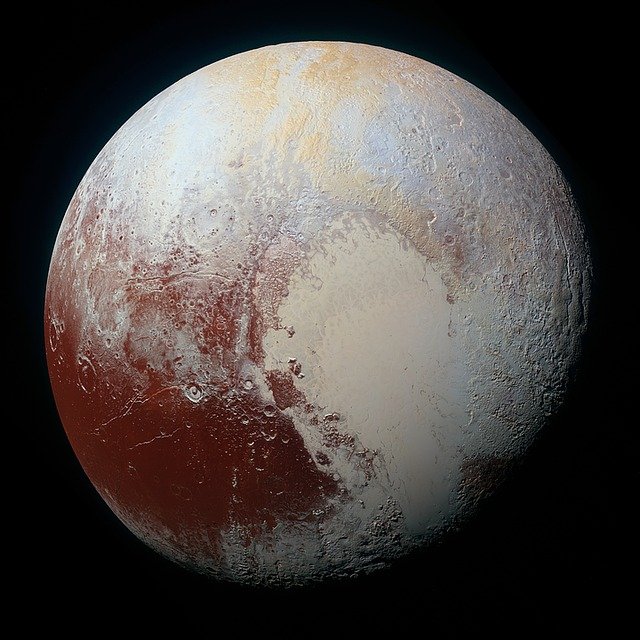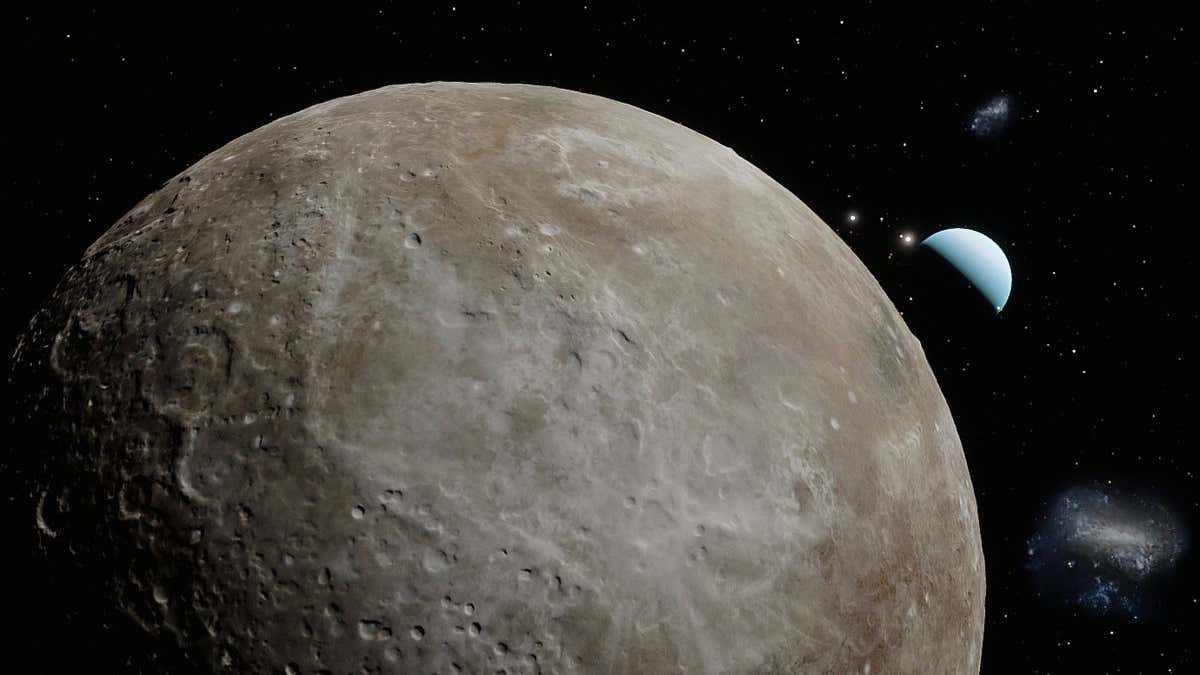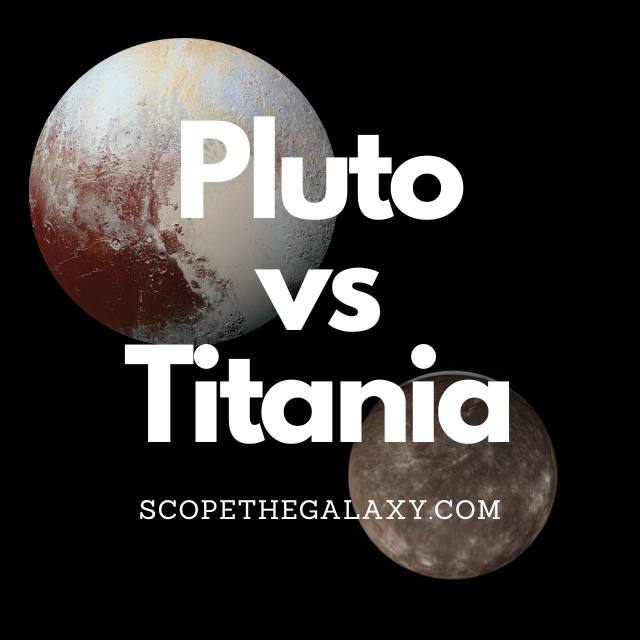*This post may contain affiliate links. This means we may make a commission if you purchase an item using one of our links*
The main differences between Pluto and Titania are that Pluto is a dwarf planet with 5 moons while Titania is simply Uranus’ largest moon, Pluto is bigger with a diameter 2,370km whereas Titania’s diameter is 1,587.6km and Pluto has a density of 1.88 g/cm³ whereas Titania is more dense with a density of 4.23 g/cm³.
For a more detailed look at both bodies along with their similarities and differences, continue reading as they will be covered more thoroughly below.
What Is The Planet Pluto?
Table of Contents

In the past Pluto was the 9th farthest official planet in our solar system however, in 2006 after many debates between astronomers, the International Astronomical Union officially downgraded it to a dwarf planet.
The reason for this downgrade at the time was primarily down to Pluto simply being very small when compared to every other planet and even the moons orbiting these planets. Pluto’s dwarf status is debated still to this day but, for now it still remains under this dwarf bracket for a planet
Its diameter for example is only 2,370km, which is a third of Earth’s Moon. With that being said, despite the significant size discrepancy Pluto shows, it still does have more moon like objects orbiting it than Earth and I’m not saying just one more.
In total this terrestrial dwarf planet has 5.
Pluto’s atmosphere consists mostly of molecular nitrogen whilst molecules of methane and carbon monoxide have been observed also. As for its surface, it consist mostly of frozen nitrogen, methane, and carbon monoxide ices.
One of Pluto’s most unique characteristic is that Charon (its largest moon) is tidally locked to it and vice versa, which means that the two essentially orbit each other.
In essence only one side of Charon and one side of Pluto surface will face each other at any given time.
Pluto’s temperature is between -222 to -232 degrees Celsius based on how close it gets to the Sun when orbiting it, whilst its core temperature isn’t anything too special sitting around 500 – 1,000 degrees Celsius.
The main reason it’s as cold as it is and has a relatively cold core in comparison to the other planets would be, which is mostly down to its size. A larger size would mean more mass could be compressed at the center which would produce more heat at the core.
Pluto’s orbit is also different from the other main plants in our solar system, following an elliptical orbital path as opposed to the circular path the others take. As a result of its distance from the Sun, Pluto will complete each one of these elliptical cycles around once every 247.78 years.
Even its rotational cycle is very slow, where one cycle is completed in 157 hours. Another interesting fact is the Pluto’s axial tilt is almost on its side at 57 degrees, similar to Uranus.
What Is The Moon Titania?

Titania is the biggest of Uranus’s moons, with a circumference of 4,956km and a diameter of 1576.8km.
The high density of this moon suggests that it most likely formed from a collection of dust and debris leftover from the formation of Uranus or from the debris created in the collision that reportedly tilted Uranus onto its side. As a result Titania has a mass of 3.4 × 10^21 kg.
First discovered on 11th January 1787 (the same day as the discovery of Oberon, the second biggest moon of Uranus) by British astronomer William Herschel, the name “Titania” comes from the Shakespeare play, A Midsummer Night’s Dream. (Most of Uranus’ moons are named after Shakespeare’s characters.)
Having observed Titania for many years, scientists theorize that its composition is likely to be equal parts ice and rock, the latter of which may contain carbonaceous materials and organic compounds.
Research suggests that the moon most likely has a rocky core (accounting for 66% of the moon’s radius) and an icy mantle. If the mantle contains ammonia, it will act as antifreeze and make it possible for liquid water to exist. In this instance, the moon could possess a layer of liquid ocean around 50km thick.
Titania tilts slightly towards the equator of Uranus and is tidally locked to its planet. This means a Titania day is 8 days and 17 hours which would be the same for its orbital cycle.Titania has an average temperature of -203 degrees Celsius.
The planet Uranus is also tilted, with the moons orbiting on the equatorial plane, giving it extreme seasons. On Titania, the north and south poles experience 42 years of complete sunshine followed by 42 years of total darkness.
Scientists have observed the presence of large amounts of carbon dioxide, suggesting this may be the primary component of this moon’s atmosphere. Thanks to the tilted orbit, and a concentration of solar radiation from the poles, Titania probably maintains a carbon dioxide cycle, similar to the hydrogen cycle on Earth.
How Are Pluto And Titania Similar?
Pluto and Titania do share a few similarities, which includes the following:
- Both have a hotter central core.
- Both have a rocky, terrestrial surface.
- Both are spherical in shape.
- Neither have rings surrounding them.
- Both are tidally locked entities.
- Both orbit their respective celestial objects in an elliptical pattern.
- Neither have a magnetic field.
- Neither have tectonic plates
Differences Between Pluto And Titania
In regards to the differences between these two, they include the below:
- Pluto is bigger with a diameter of 2,370km whilst Titania has a diameter of 1576.8km.
- Titania orbits Uranus whilst Pluto orbits the Sun.
- Titania has a very thin exosphere composed mostly of carbon dioxide whilst Pluto’s atmosphere is composed mostly of nitrogen, methane, and carbon monoxide.
- A day on Titania takes 8 days 17 hours whilst a Pluto day is 153 hours.
- It takes Titania 8 days 17 hours to orbit Uranus whilst Pluto orbits the Sun in around 247.78 years.
- Titania orbits Uranus 435,840km at an average distance of 422,000km whilst Pluto orbits the Sun from a distance of 5.9 billion kilometers..
- Titania’s average temperature is around -203 degrees Celsius whilst Pluto’s average temperature is -222 to -232 degrees Celsius.
- Pluto’s density is 1.88 g/cm³ whilst Titania’s density is 1.71 g/cm³.
- Pluto’s mass is 1.309 x 10^22 kg whilst Titania’s mass is 3.4 × 10^21 kg.
- Titania’s gravitational strength is 0.367 m/s² whilst Pluto’s is 0.62 m/s².
- Pluto is a dwarf planet while Titania is a natural satellite.
- Pluto has 5 moons whilst Titania has 0.
- Titania may have a water under its surface.
Summary
Although Pluto is s planet and Titania is a natural satellite, the two do share a decent amount of common features between themselves, from their lack of a magnetic field, their drastic elliptical orbits, being tidally locked to another entity and their rocky nature.
However, they are also quite different too whether it be in regards to their size, mass, density, the number of objects orbiting them and more.

